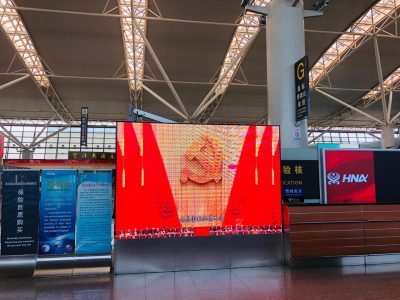Is 2020 China’s Year of Economic and Political Milestone?

Just as one New Year’s festivities end, another begins. China is set to celebrate the Year of the Rat on January 25. Folklore says it’s a good year for business and fertility. But it also marks an economic and political milestone.
For the first time since the 18th century China is entering a decade as an established global economic power. Ten years ago, with the West battling a financial crisis, people were talking about the future rise of China as if it were some distance away, if ever. Many in the West thought China would have its own financial crisis. Instead, the Chinese economy, six years ago, became the world’s largest, measured by purchasing power parity, according to the World Bank. Its new status, and its purchasing power, helped the West recover. It kept on replenishing the global economic punch bowl.
A $600 billion stimulus package was launched in 2008 to boost domestic demand and spur growth. In comparison, the United States and Japan pumped a comparatively meager $152 billion and $100 billion respectively, into their domestic markets.
True, today its turbo-charge advance has slowed, with the official growth rate at 6.2 percent, down from the double digit growth. Those are the official statistics. The actual growth rate may be much lower but there is no disputing the fact that the economy is more than twice as large as it was in 2010.
China, a decade ago, was synonymous with cheap manufacturing and consequently not taken too seriously. The same misconception was prevalent in the 1960s about what turned out to be another Asian powerhouse, Japan. In the 1980s property around the imperial palace in Tokyo was worth more than all the real estate in California. Massive bank debt, leading to stagnation since the early 1990s, ended that bizarre situation. China, on the other hand, has seen a marked rise in property prices, but nothing anywhere near as extravagant.
The West, in the first decade of the century, believed that China would remain essentially defined by imitation, unable to match its capacity for innovation.
Then came Huawei, Tencent and Alibaba to challenge Microsoft, Google, Facebook and Amazon. Shenzhen can look Silicon Valley firmly in the eye. One indicator of its rising intellectual power is that China accounts for almost half of all global patent filings.
“Asia continues to outpace other regions in filing activity for patents, trademarks, industrial designs and other intellectual property rights that are at the center of the global economy,” World Intellectual Property Organisation Director General Francis Gurry said in October. “China alone accounted for almost half of all the world’s patent filings, with India also registering impressive increases. Asia has become a global hub for innovation.”
The Belt and Road Initiative, a global network of highways, railways, ports, train stations and airports, was launched by China in 2013.
The Eurasian landmass, home to more than 60 percent of the world’s population, could be transformed. More than 140 countries, overwhelmingly from the developing world, have now signed up.
But as Chinese leaders toast their success at New Year banquets they will be aware of challenges they face.
A brutal crackdown in the restive western region of Xinjiang is ongoing, tarnishing China’s global image. Hong Kong continues to seethe, but has been unable to attract any sympathy on the mainland. The trade war with the US, or at least the first phase, has been resolved. Crucially, the deal did not tackle some of the major issues, such as industrial subsidies for Chinese companies or foreign companies facing forced technology transfers for market access.
A caveat also accompanied China’s pledge to buy more US goods. Chinese purchases of $40bn worth of US farm goods a year over the next two years would be “based on market conditions”.
But it is debt levels that could cause indigestion at the banquets.
At more than 300 percent of GDP, debt is a clear and present danger.
This is mostly financed by Chinese banks and off-the record lending by financial institutions in the “shadow bank” sector to provincial governments. Like the sub-prime crisis in the US, much of this debt, like non-performing mortgages, is hidden from plain sight to evade a law in China that forbids banks lending directly to provincial governments.
What is not hidden is that hundreds of billions of dollars are owed by Chinese companies in debt that is coming due this year.These companies must pay back $90 billion in debt denominated in American dollars, according to S&P Global. This shows that the lenders are global companies and investors outside China. In 2021, an additional $110 billion is due.
How this issue is tackled will determine not only China’s financial health but also that of the global economy.
*
Note to readers: please click the share buttons above or below. Forward this article to your email lists. Crosspost on your blog site, internet forums. etc.

